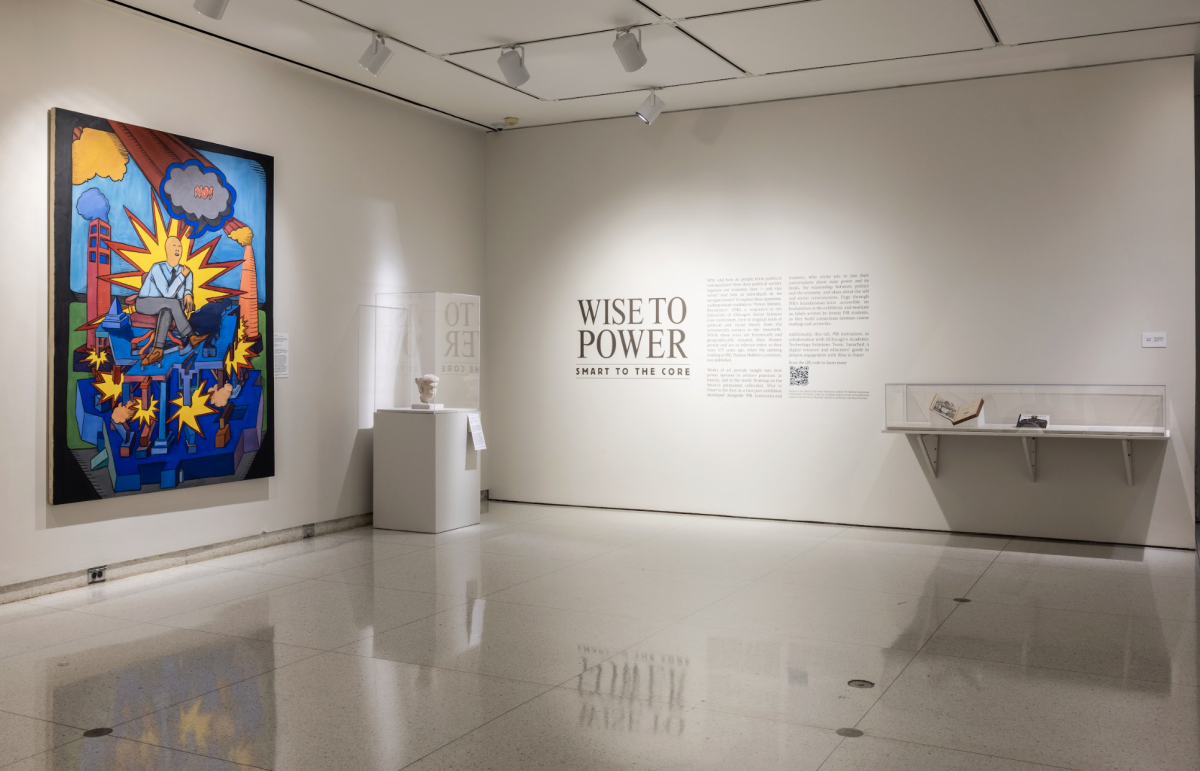Cheer up, Hyde Park: The Tribune and the Sun-Times care about you. If you’re 18-34, part of that demographic which so famously does not read newspapers, then you’re the target audience for RedEye and Red Streak, the new tabloids that, since Wednesday, have been so visibly present on campus.
Newspapers around the country are terrified by the fact that you don’t read them. Between 1972 and 2000, according to an ongoing study by our own University, daily readership of newspapers by 21-25 year-olds dropped by half. Hence the Tribune’s “Q” section, which was apparently not enough; the Sun-Times is still running 10 percentage points ahead of the Tribune with the 18-34 goldmine. In response, the Tribune focus-grouped the hell out of RedEye, and the Sun-Times rushed to respond with Red Streak in what even Sun-Times editors openly admit was a defensive maneuver.
Their different origins don’t show. Both publications suck to similar degrees, and both emulate the clichés of youth-oriented marketing: brevity, snark, “edginess” (e.g. RedEye’s picture of the Kurt Cobain death scene—what focus group wanted more dead people?), and color. Their failures as traditional journalism are self-evident, as traditional journalists have already pointed out, but traditional journalism isn’t the point. Both tabloids are looking into the future of journalism, and as such are intriguing experiments. Even in this context, they’re both failures, and this is even more instructive.
RedEye, which started all this, has a perception of its audience as busy, upwardly mobile city dwellers. “We liked the images RedEye evoked—living life around the clock feeling the morning-after effects of staying out too late.” (Coming soon: the Maroon’s Hangover). For this audience, they’ve tailored a newspaper that can be read in 20 minutes, according to “General Manager” John O’Loughlin, a pick from the Tribune’s strategic marketing division, natch, whose favorite Web site is lasvegas.com. Feeling ill yet?
Already, RedEye is misguided. Newspapers are already for people without a lot of time, save maybe the Sunday New York Times. If you have more time, there’s The New Yorker, or college. Reading an entire Tribune does take a chunk of time, but I only know one person who seems to read an entire daily newspaper every day—and she’s the publisher of it. Lisa Madigan probably cares a lot about reading Joe Birkett’s most recent slam on her, but probably a lot less about Brian Urlacher’s exploits. Newspapers strike a fine balance between depth, breadth and brevity, tending to err on the side of breadth and brevity; RedEye sacrifices all depth (which is to say context, back story, quotes, and sometimes names) to breadth, and even sacrifices that to brevity.
The editors claim that they are in a battle with television and the Internet, and that the newspaper is a response to the truncation of both mediums. The Internet, however, offers both brevity and depth, and ought to be readily and cheaply available to the demographic they covet. Given that virtually the entire content of the paper is almost wholly collected from other sources—save for a couple mediocre columns—there’s nothing that net-savvy readers can’t find in an equally quick scan. Everything that RedEye does is done better by sites familiar to frequenters of the Internet. Witty sports is done better by espn.com, sex is done better by Nerve and Salon, news is done better by the Yahoo! AP wire and cnn.com. After awhile, even 25 cents is going to seem like an absurd price to pay when so much more is waiting at the end of the bus ride.
For local papers—which the Tribune and the Sun-Times both are, essentially—there are two competing theories about the future of newspapers. One, which seems to be falling out of vogue, is that newspapers will serve as pointers to stories that are better covered and better developed by larger or more specialized sources. RedEye, for example, might briefly cover developments in the legalization of medical marijuana in California, and readers who want more will seek out the full story elsewhere. This strategy has a pitfall that’s anathema to any publication, however: it’s a terrible plan for any publication to try to drive its readers elsewhere, especially to places where readers will spend more time. And if that’s the Tribune, as RedEye editors are hoping (and where most of RedEye’s content originates), why not just buy the damn thing in the first place?
A second, more viable option, is to play up the strengths of local newspapers—local news. As economic and logistical necessity forces large local papers like the Tribune or The Philadelphia Inquirer to reduce national and world coverage and lean on the AP and Reuters, their strength will remain in their experience with the local scene, a strength that Red Streak and especially RedEye does not play up. RedEye is at particular danger here—the Sun-Times offers more content, much of it overlapping, for only ten cents more, in an El-friendly format.
The purpose of these new tabloids is to introduce young readers to daily newspapers. Except for introducing us to the actual physical experience of holding a newspaper, all they’re doing is giving us an inferior version of other media that we don’t have to pay for. God willing, they’ll both be gone soon; having produced such pandering, condescending affronts to our generation, they’ve got it coming. With luck, they won’t take a generation of newspaper readers with them.








